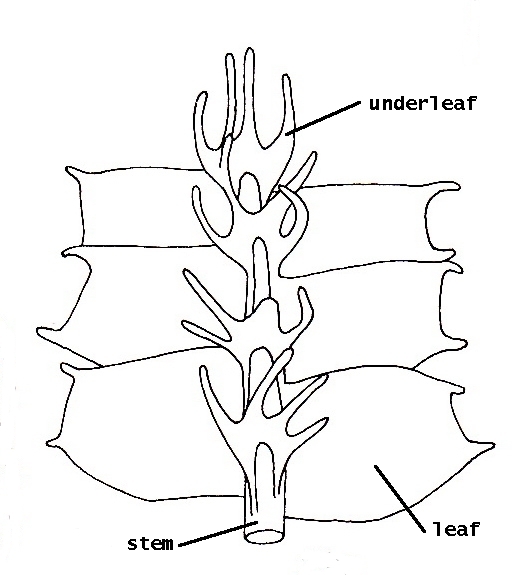u·biq·ui·tous (ū bēk´wi təs or ū bik´-) adj. present everywhere, or appearing to be so. [< L ubīque everywhere] —u·biq´ui·tous·ly, adv. —u·biq´ui·ty, n.
um·bel·lule (um bəl´ūl) n. a small umbel – generally employed in comparison to related species which also bear umbels. [< L umbella parasol, dim. of umbra shade + -ulus diminutive tendency]
un·der·leaf (un´dėr lēf´) n. -leaves. among the leafy liverworts, those microphylls produced along the inferior side of a stem, often differing in distinctive ways from the lateral microphylls; ventral scale.
u·re·din·i·o·spore (ū´ri din´ē ō spôr) n. a vegetative spore produced by all of the macrocyclic parasitic rusts; uredospore. These spores usually are a vivid orange or red in colour. [NL < L ūrēdin- of a blight + -o- connective + Gk. spora σπορά seed]
u·re·din·i·um (ū´ri din´ē əm) n. -i·a. the fruiting body of a rust fungus which is capable of bearing urediniospores; uredosorus; uredium. [NL < L ūrēdin- of a blight + -ium locative suffix]
u·re·din·oid (ū´rē´din oid) adj. 1 of or pertaining to the lifestage of a fungal rust which produces uredinia. 2 appearing like an uredinium, or the organism bearing it. [NL < L ūrēdin- of a blight + -oides, a contraction of Gk. -eidos -εἶδος a thing that is like]
u·re·di·um (ū´rē´dē əm) n. -i·a. uredinium; uredosorus. [< L ūrēdō blight + -ium locative suffix] —u´re´di·al, adj.
u·re·do·so·rus (ū rē´dō sôr´əs) n. -so·ri. uredinium; uredium. [NL < L ūrēdō blight + Gk. sōros σωρός heap]
u·re·do·spore (ū rē´dō spôr´) n. an urediniospore, of the macrocyclic parasitic rusts. These spores usually are a vivid orange or red in colour. [NL < L ūrēdō blight + Gk. spora σπορά seed]

